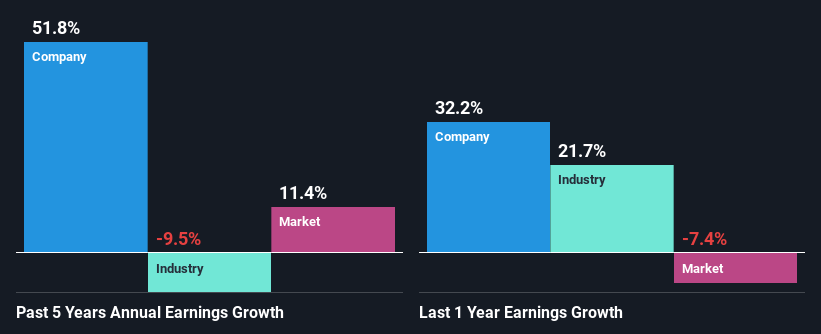Tung Lok Restaurants (2000) Ltd's (Catalist:540) Stock Has Been Sliding But Fundamentals Look Strong: Is The Market Wrong?
It is hard to get excited after looking at Tung Lok Restaurants (2000)'s (Catalist:540) recent performance, when its stock has declined 12% over the past month. However, stock prices are usually driven by a company’s financial performance over the long term, which in this case looks quite promising. Particularly, we will be paying attention to Tung Lok Restaurants (2000)'s ROE today.
Return on equity or ROE is an important factor to be considered by a shareholder because it tells them how effectively their capital is being reinvested. Simply put, it is used to assess the profitability of a company in relation to its equity capital.
See our latest analysis for Tung Lok Restaurants (2000)
How To Calculate Return On Equity?
Return on equity can be calculated by using the formula:
Return on Equity = Net Profit (from continuing operations) ÷ Shareholders' Equity
So, based on the above formula, the ROE for Tung Lok Restaurants (2000) is:
34% = S$4.6m ÷ S$14m (Based on the trailing twelve months to September 2023).
The 'return' is the profit over the last twelve months. Another way to think of that is that for every SGD1 worth of equity, the company was able to earn SGD0.34 in profit.
What Has ROE Got To Do With Earnings Growth?
We have already established that ROE serves as an efficient profit-generating gauge for a company's future earnings. Depending on how much of these profits the company reinvests or "retains", and how effectively it does so, we are then able to assess a company’s earnings growth potential. Assuming all else is equal, companies that have both a higher return on equity and higher profit retention are usually the ones that have a higher growth rate when compared to companies that don't have the same features.
A Side By Side comparison of Tung Lok Restaurants (2000)'s Earnings Growth And 34% ROE
First thing first, we like that Tung Lok Restaurants (2000) has an impressive ROE. Additionally, the company's ROE is higher compared to the industry average of 6.5% which is quite remarkable. As a result, Tung Lok Restaurants (2000)'s exceptional 52% net income growth seen over the past five years, doesn't come as a surprise.
Next, on comparing with the industry net income growth, we found that the growth figure reported by Tung Lok Restaurants (2000) compares quite favourably to the industry average, which shows a decline of 9.5% over the last few years.

Earnings growth is a huge factor in stock valuation. The investor should try to establish if the expected growth or decline in earnings, whichever the case may be, is priced in. This then helps them determine if the stock is placed for a bright or bleak future. If you're wondering about Tung Lok Restaurants (2000)'s's valuation, check out this gauge of its price-to-earnings ratio, as compared to its industry.
Is Tung Lok Restaurants (2000) Efficiently Re-investing Its Profits?
Tung Lok Restaurants (2000)'s significant three-year median payout ratio of 55% (where it is retaining only 45% of its income) suggests that the company has been able to achieve a high growth in earnings despite returning most of its income to shareholders.
Conclusion
Overall, we are quite pleased with Tung Lok Restaurants (2000)'s performance. We are particularly impressed by the considerable earnings growth posted by the company, which was likely backed by its high ROE. While the company is paying out most of its earnings as dividends, it has been able to grow its earnings in spite of it, so that's probably a good sign. Up till now, we've only made a short study of the company's growth data. You can do your own research on Tung Lok Restaurants (2000) and see how it has performed in the past by looking at this FREE detailed graph of past earnings, revenue and cash flows.
Have feedback on this article? Concerned about the content? Get in touch with us directly. Alternatively, email editorial-team (at) simplywallst.com.
This article by Simply Wall St is general in nature. We provide commentary based on historical data and analyst forecasts only using an unbiased methodology and our articles are not intended to be financial advice. It does not constitute a recommendation to buy or sell any stock, and does not take account of your objectives, or your financial situation. We aim to bring you long-term focused analysis driven by fundamental data. Note that our analysis may not factor in the latest price-sensitive company announcements or qualitative material. Simply Wall St has no position in any stocks mentioned.

 Yahoo Finance
Yahoo Finance 